Kinera Hodur IEM Review

Kinera Hodur IEM Review
Introduction:
Kinera Electronic Co. Ltd. is a Chinese company located in DongGuanCity – China and is specialized in the production and development of portable audio equipments like In-Ear Monitors, Earbuds and Cables.
- Kinera’s Motto is “LIVE ONLY FOR HONOR”.
The Kinera Hodur features a Tribrid Driver Configuration, which is a combination of 1x Kinera self-developed high sensitivity Low Power EST Driver + 1x Kinera Customized K10012 BA Driver + 1x 10mm Coaxial Dual-magnetic Tesla Composite Diaphragm Dynamic Driver that are located inside a pretty looking 5-axis CNC machined Aviation grade Aluminium Alloy Shell. Moreover, it comes with an 8 Cores OCC Silver Plated detachable cable with modular plug design and 2-Pin interface.
Hodur the God of Night & Darkness:
The Hodur has spiritual connection with the Norse Myths same like all previous IEM model that I have reviewed of the company. The Hodur refers to the God of Night and Darkness, which is said to be the twin brother of the Baldr (Kinera’s flaghip IEM).

Disclaimer:
I would like to thank Kinera for providing me the Hodur Univeral IEM sample for review purposes. I am not affiliated with Kinera beyond this review and all these words reflect my true and unaltered opinions about the product.
Price & Availability:
The actual price for the Kinera Hodur is 299.00 US$. More information’s can be found under the link below;
Package & Accessories:
The Hodur follows Kinera’s beautiful looking hexagonal box design, which reflects the Night & Darkness Theme of the IEM. The surface of the box shows the Hodur branding & character along with the expression “Darkness doesn’t exist alone, it just means where the light doesn’t shine”.
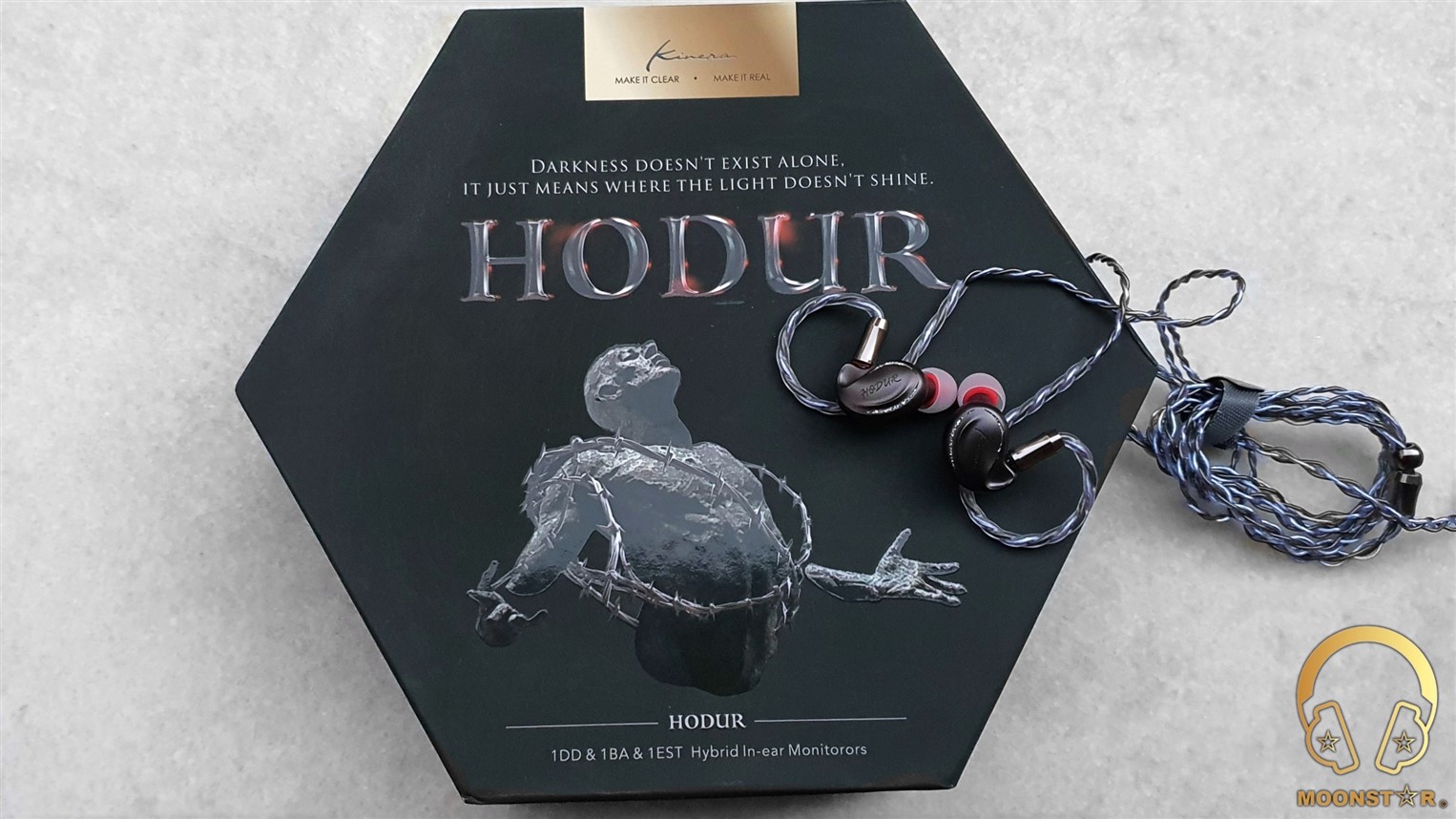
Inside the box are the following contents/accessories;
- 1 x pair Kinera Hodur Universal IEM
- 1 x 8-Core Silver Plate OCC wire cable with 2-Pin Connector with Modular Design
- 2 x Modular Adapters (1x 4.4mm Balanced + 1x 3.5mm Single Ended)
- 5 x pairs Final Audio Type-E Silicone Ear Tips
- 7 x pairs Kinera Custom Silicone Ear Tips (K-07 Balanced & K-285-02 Vocal)
- 1 x Storage Case
- 1 x Cleaning Tool
- 1 x Print Material (User Manual)
The Kinera is known for its attention to the packaging and content of their products and the Hodur is not an exception.

The Hodur came with rich set of accessories that includes a wide variety of silicone ear tips that, which are 7 pairs of Kinera Custom Silicone Ear Tips (K-07 Balanced & K-285-02 Vocal) and 5 pairs of Final Type-E tips.
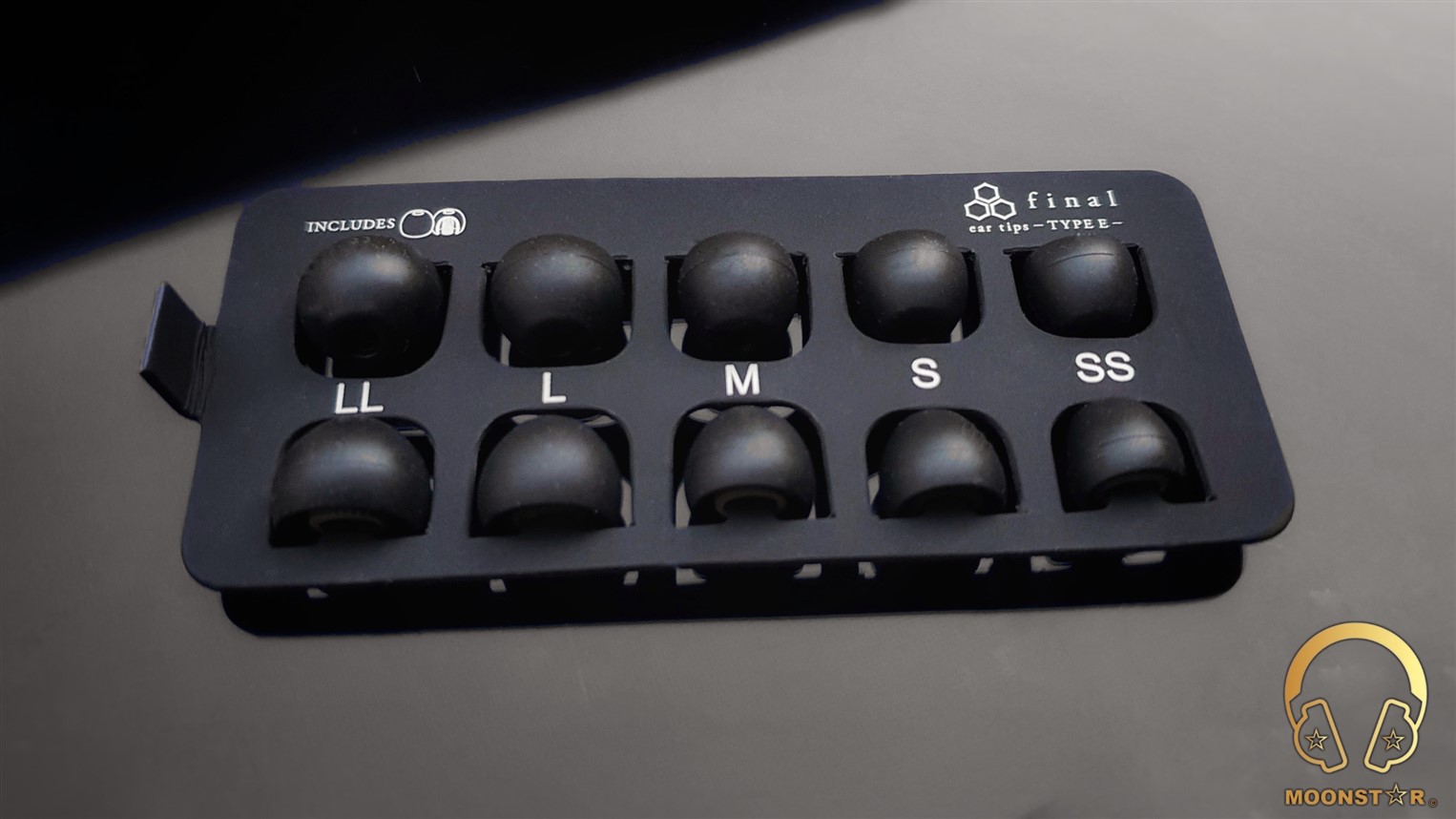
Inside the box are 3 interchangeable headphone plugs (1x 4.4mm Balanced, 1x 2.5mm Balanced, 1x 3.5mm Single Ended), which are party of the modular cable design.

Inside the box came a premium look storage case in dark grey color with the Hodur branding on the top.
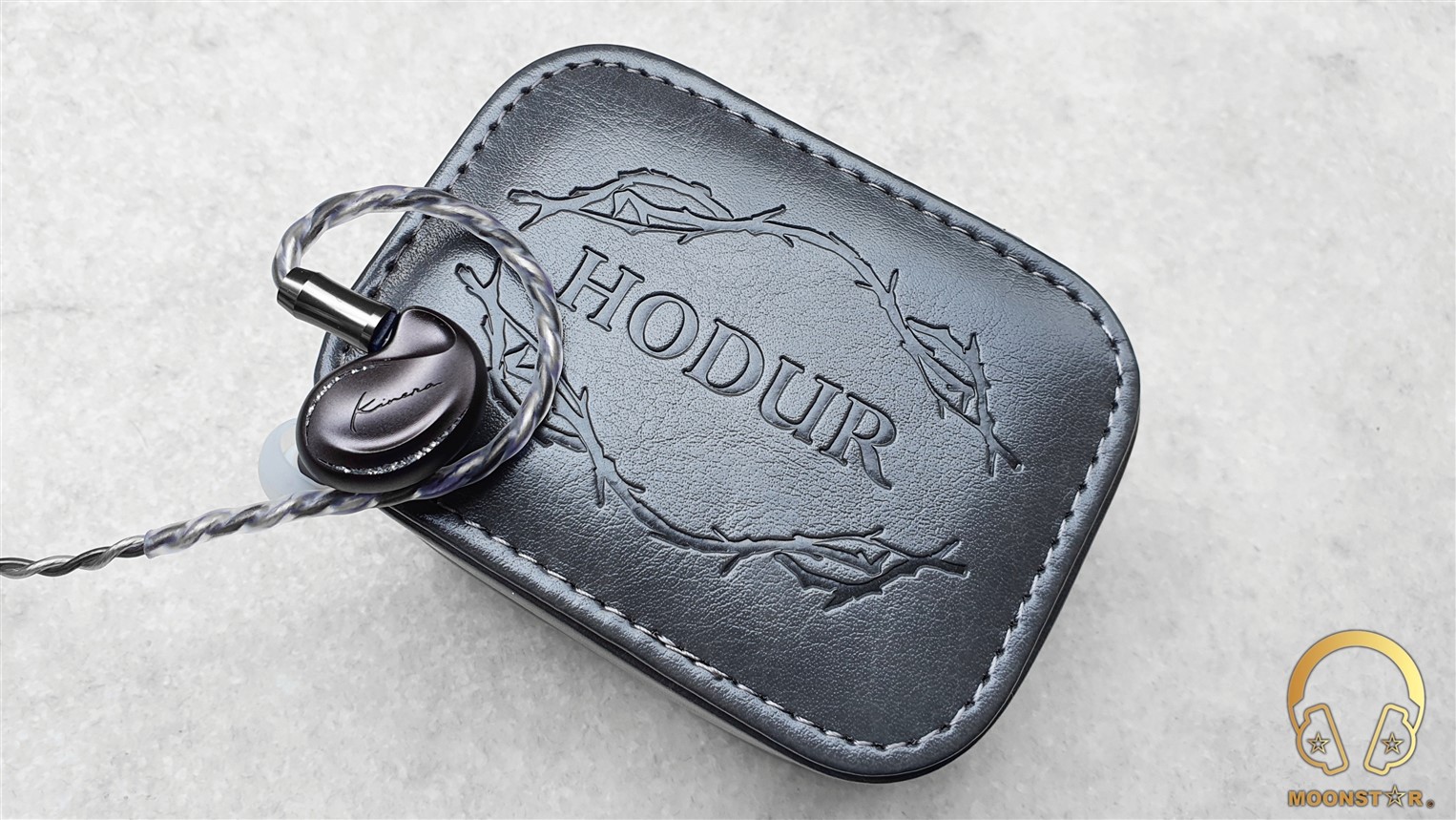
The cleaning tool and the fancy looking print material are some nice additions.
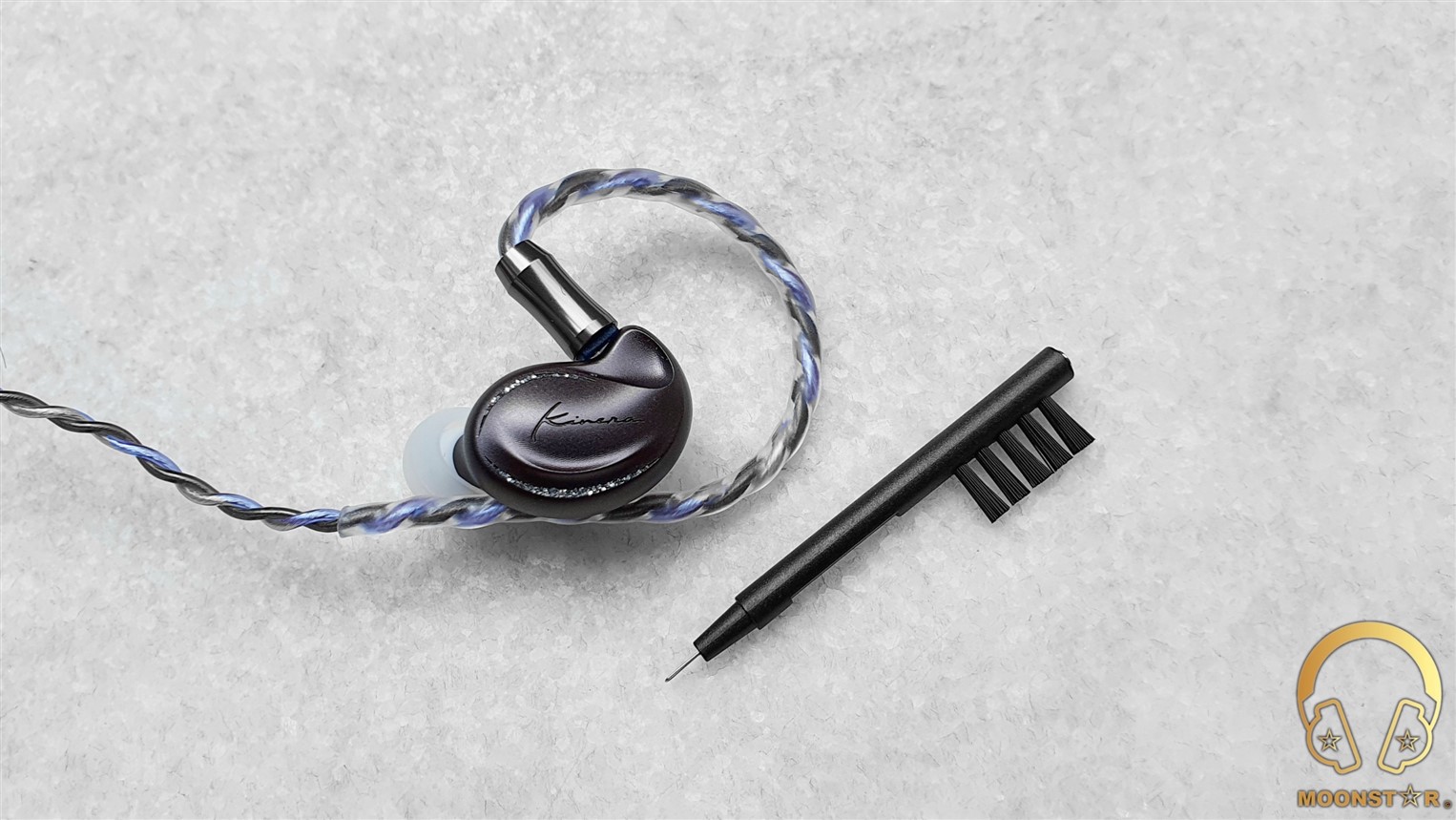
Design & Build Quality:
Kinera is a brand that is also known to its attention do the build quality and design of their products. The Hodur is another eye catching earphone and the first Universal IEM of the company that comes with a metal housing that is made from 5-Axis CNC machined Aviation grade Aluminum Alloy material, with a special anodizing process. This material makes the Hodur lightweight with just 5 grams per earpiece and also durable and very corrosion-resistant.
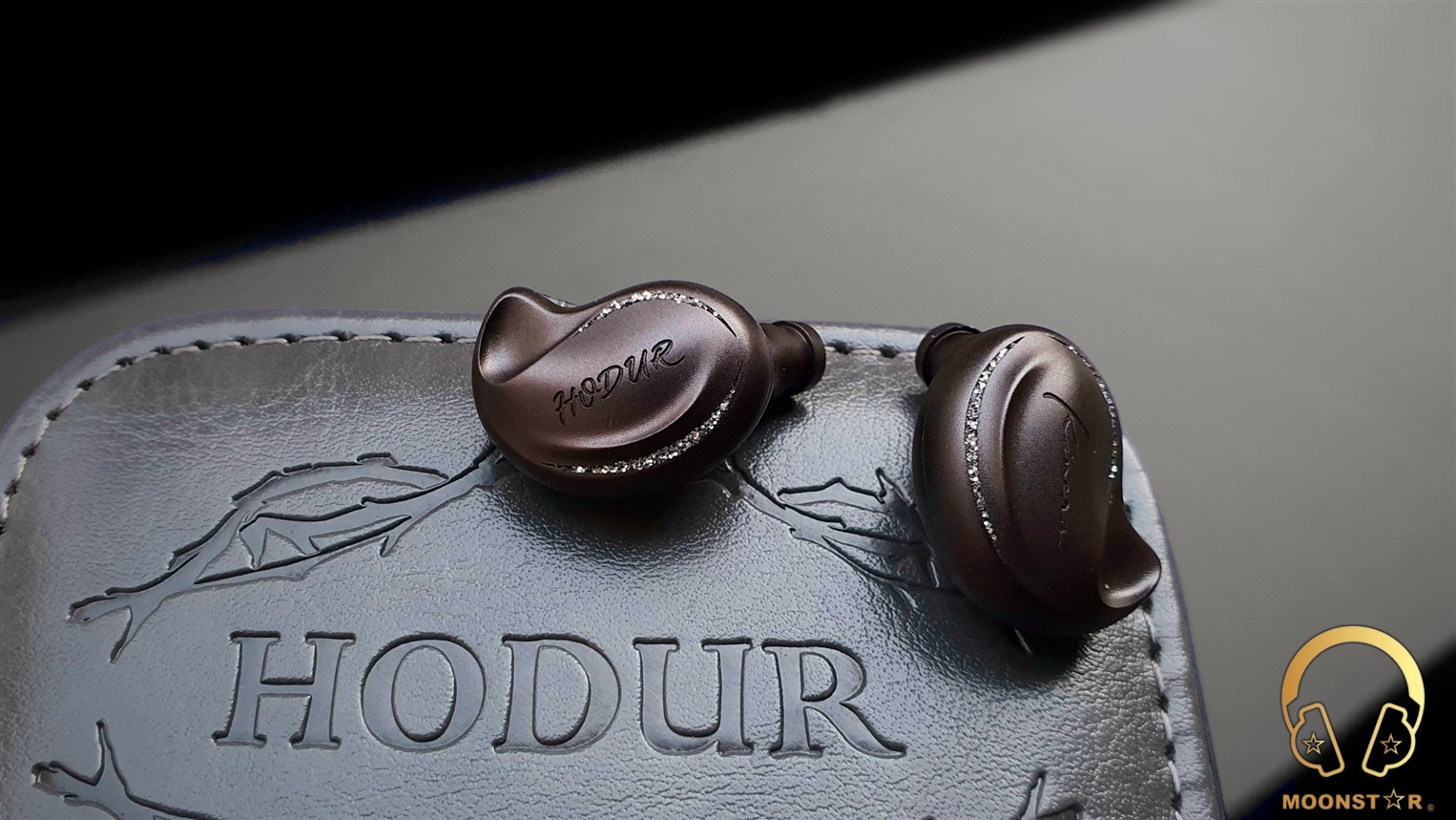
The Kinera Hodur is available in two color option that are “mat metallic blue” and a “dark grey” color option same like my review unit.

Inside the heart of the Hodur is a 3-way 1 acoustic conduit solution, which is part of the Tribrid Driver configuration. This is a combination of 1x Kinera self-developed high sensitivity low power EST Driver + 1x Kinera Customized K10012 BA Driver + 1x 10mm Coaxial Dual-magnetic Tesla Composite Diaphragm Dynamic Driver.
As you can see, Kinera puts a lot of efforts these days to develop and integrate their own EST, DD, BA and even innovative patented SPD “Square shaped Planar Driver” that will be used inside the upcoming Celest Gumiho in order to reduce the costs.

The faceplate of the Kinera Hodur evokes a high-quality image with its design resembling an expensive piece of jewellery. The left faceplate sports the Kinera branding, while the right faceplate shows the Hodur logo both engraved in to the surface.

However, the main attraction are the sparkling little stones that have been carefully placed in linear notches at the top and bottom of the faceplate, which adds the Kinera Hodur a premium look and feel. The designer outlines the appearance of the light with broken diamonds to explain the viewer the reasons for Hodur darkness.
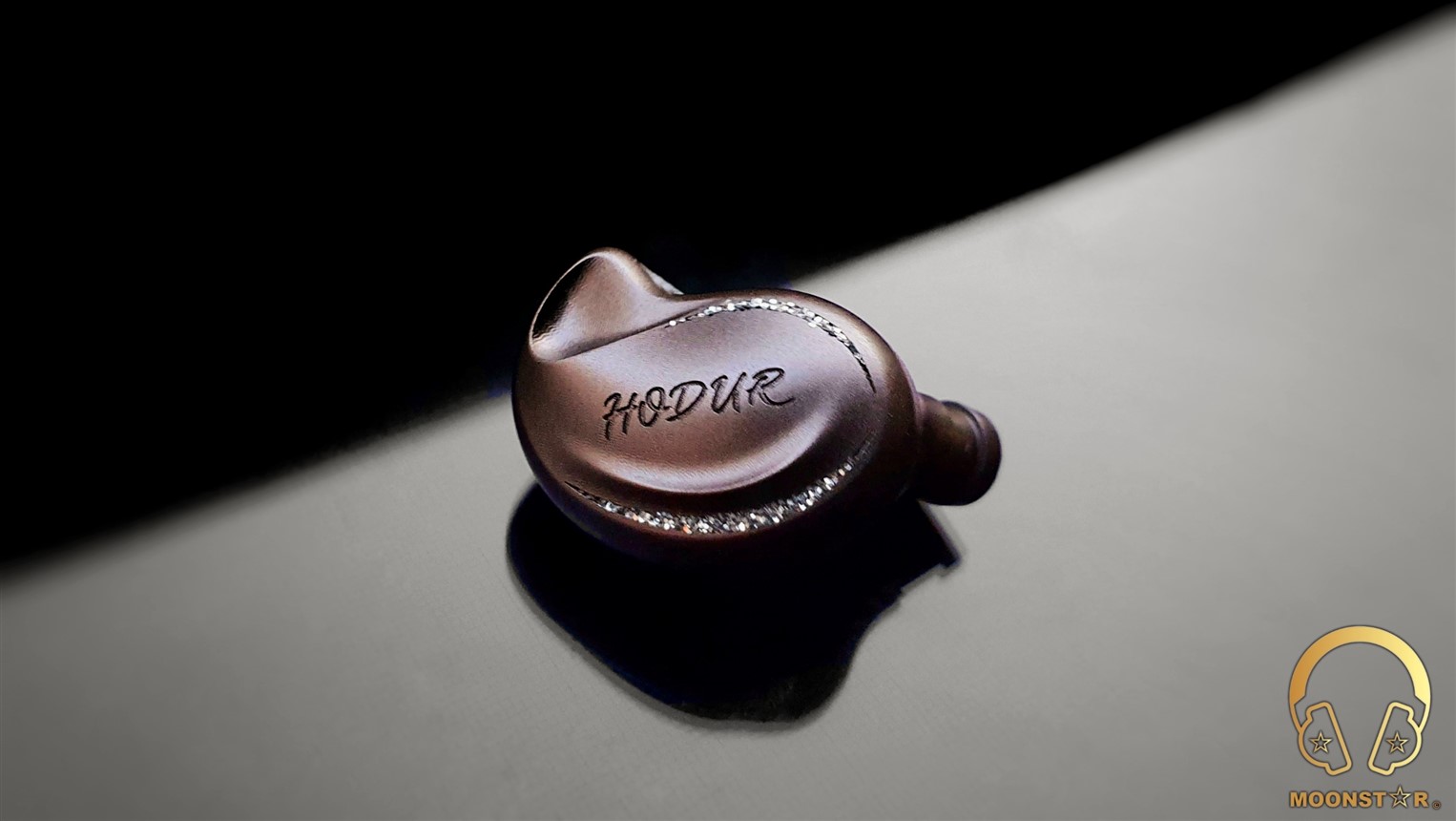
On the top of each monitor shell is the one 0.78mm diameter 2-Pin female connector that offer a pretty tight and secure connection with the male connectors of the detachable cable.
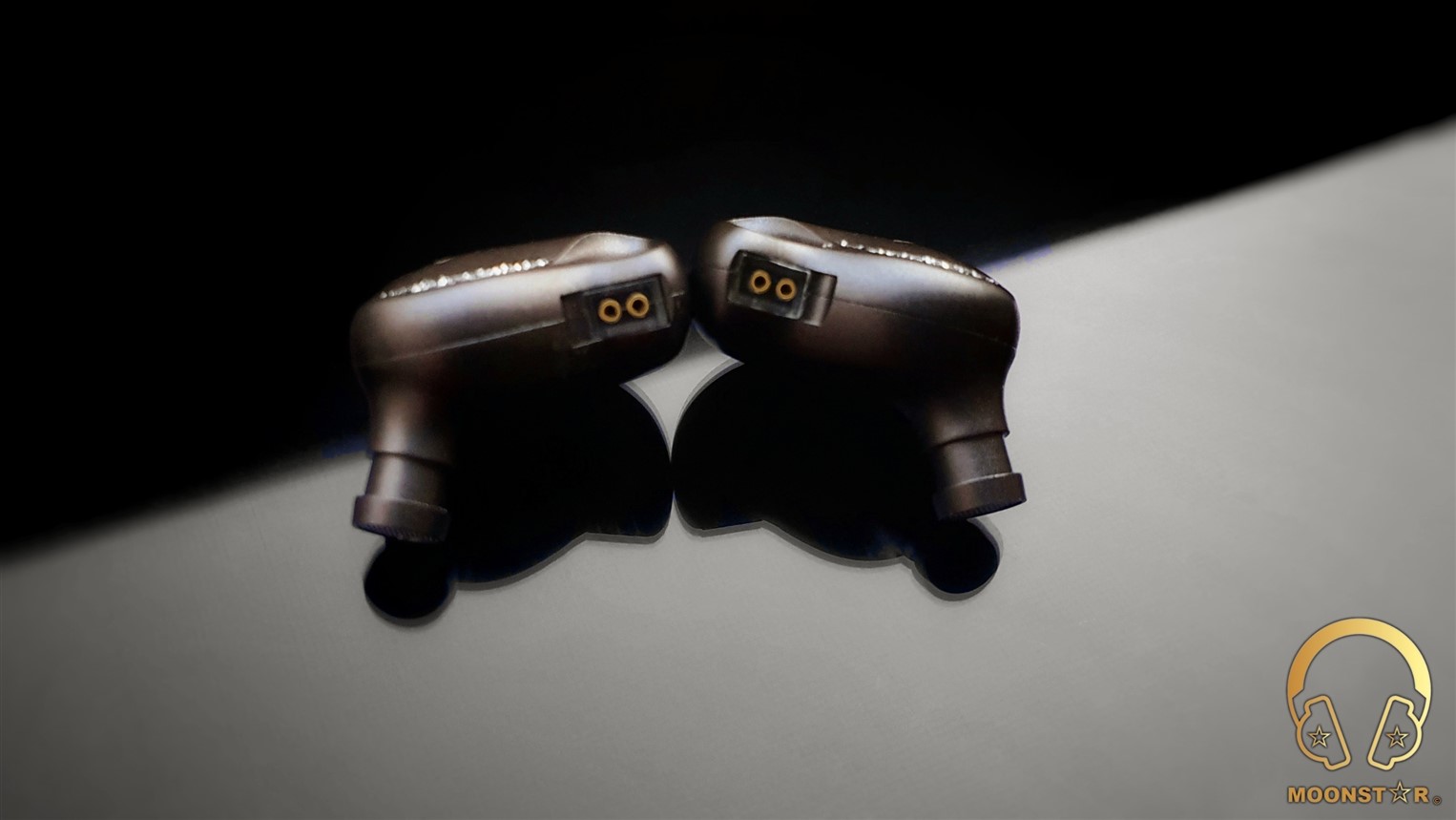
The inner surface of the monitors features a slightly angled sound nozzle, two ventilation openings and an L (Left) or R (Right) marking placed between these small openings. On the top of the sound nozzle is equipped with a 120-mesh screen filter in order to block the insertion of small particles like dust and earwax, which could damage the internals over time. The nozzle has a diameter of 5.93mm, which makes the Hodur compatible with most ear tips.

On the top of each monitor shell is the one 0.78mm diameter 2-Pin female connector that offer a pretty tight and secure connection with the male connectors of the detachable cable.

8-Core OCC Detachable Cable:
The Kinera Hodur comes with a detachable 8-core Silver Plate OCC (Ohno Continuous Cast) wire cable that has a nice braided design. It has a strand configuration of 25 strands with a dia. of 0.05mm + 25 stands with a dia. Of 0.08mm that is silver plated. The cable sports a soft PVC outer insulation with very low amount of microphonic effect.
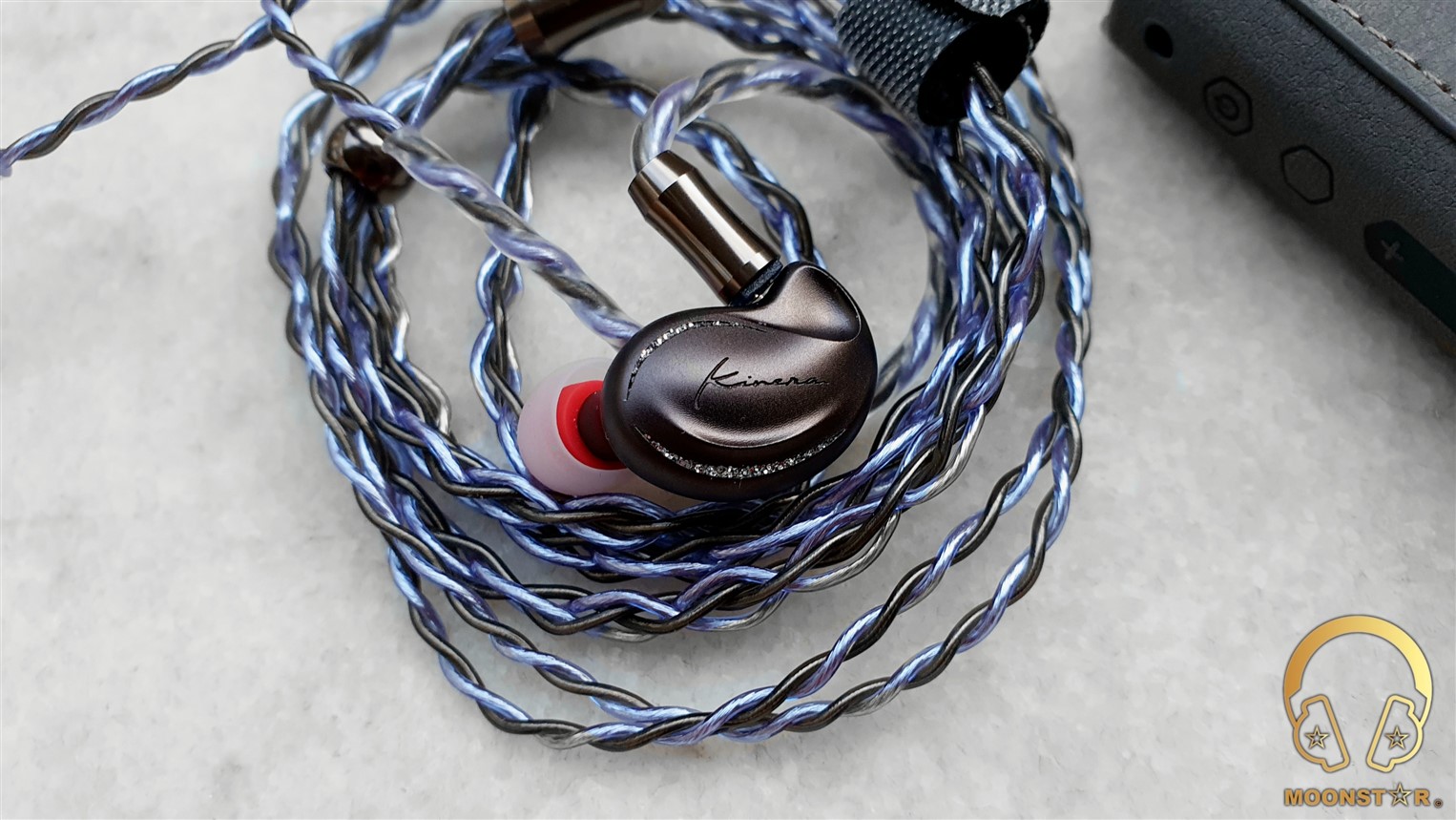
The 0.78mm diameter 2-Pin connectors do have protective metal housing with a finish in gun metal color that do have left and right markings (red for right & transparent for the left earpiece).
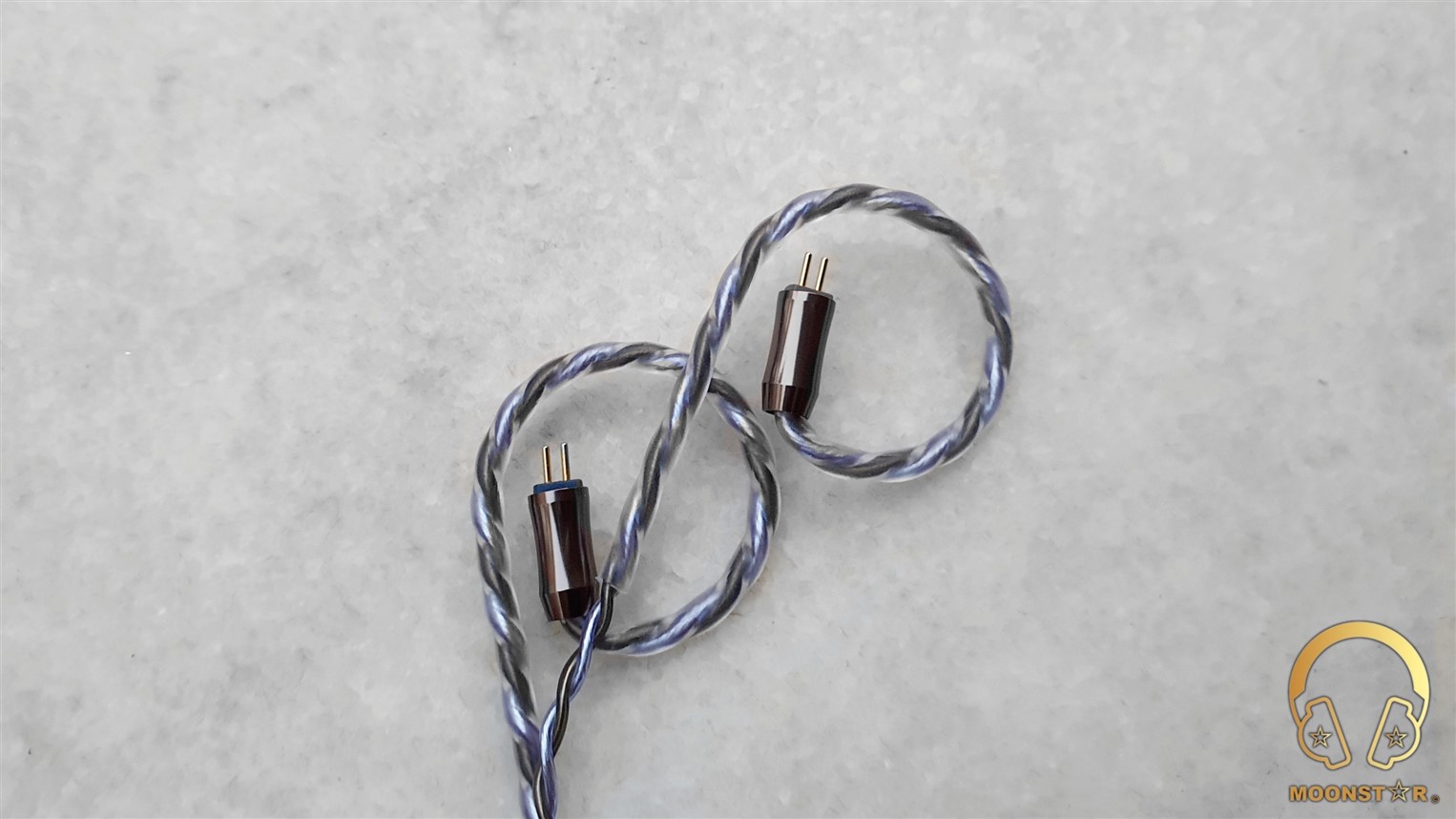
Near the 2-Pin connectors are flexible heat shrink ear guides.
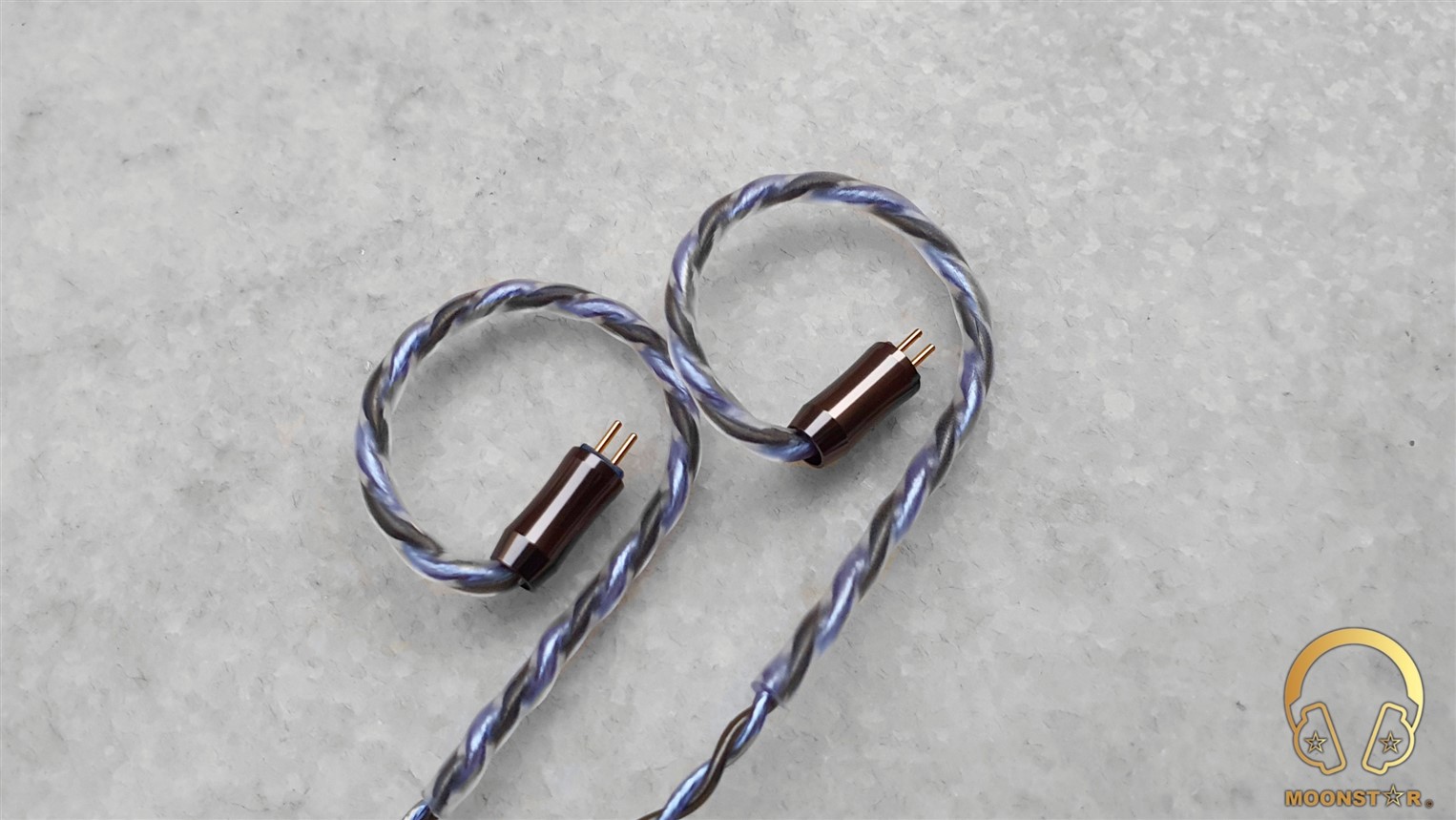
The cable sports a y-splitter and chin slider made from metal material with the same gun metal finish.
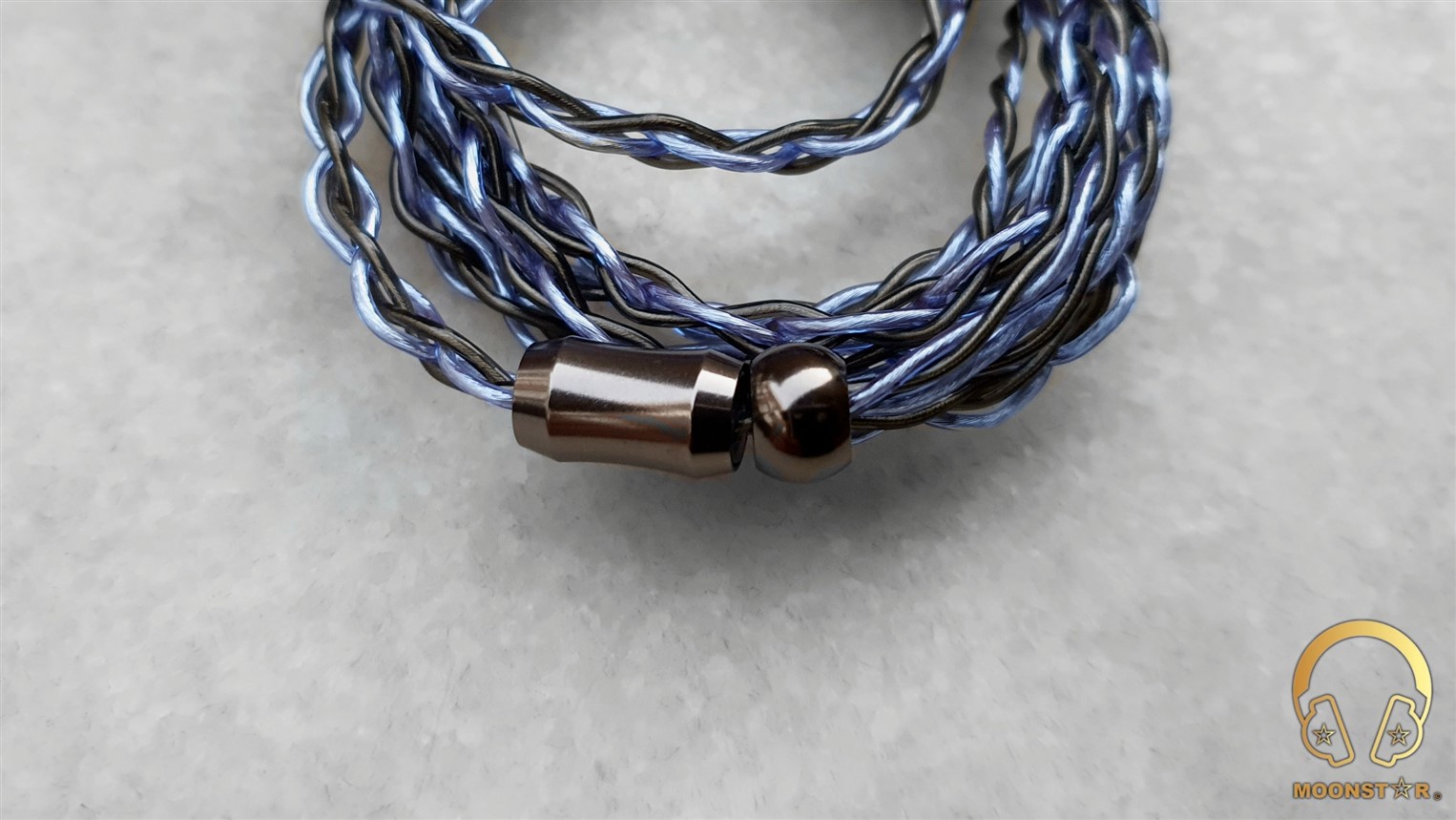
The cable of the Hodur features a modular headphone plug design with 1x 4.4mm Balanced and 1x 3.5mm Single-Ended termination plugs that are included inside the box.

The modular plugs do have a strait profile design and do sport the Kinera brand logo on the top.
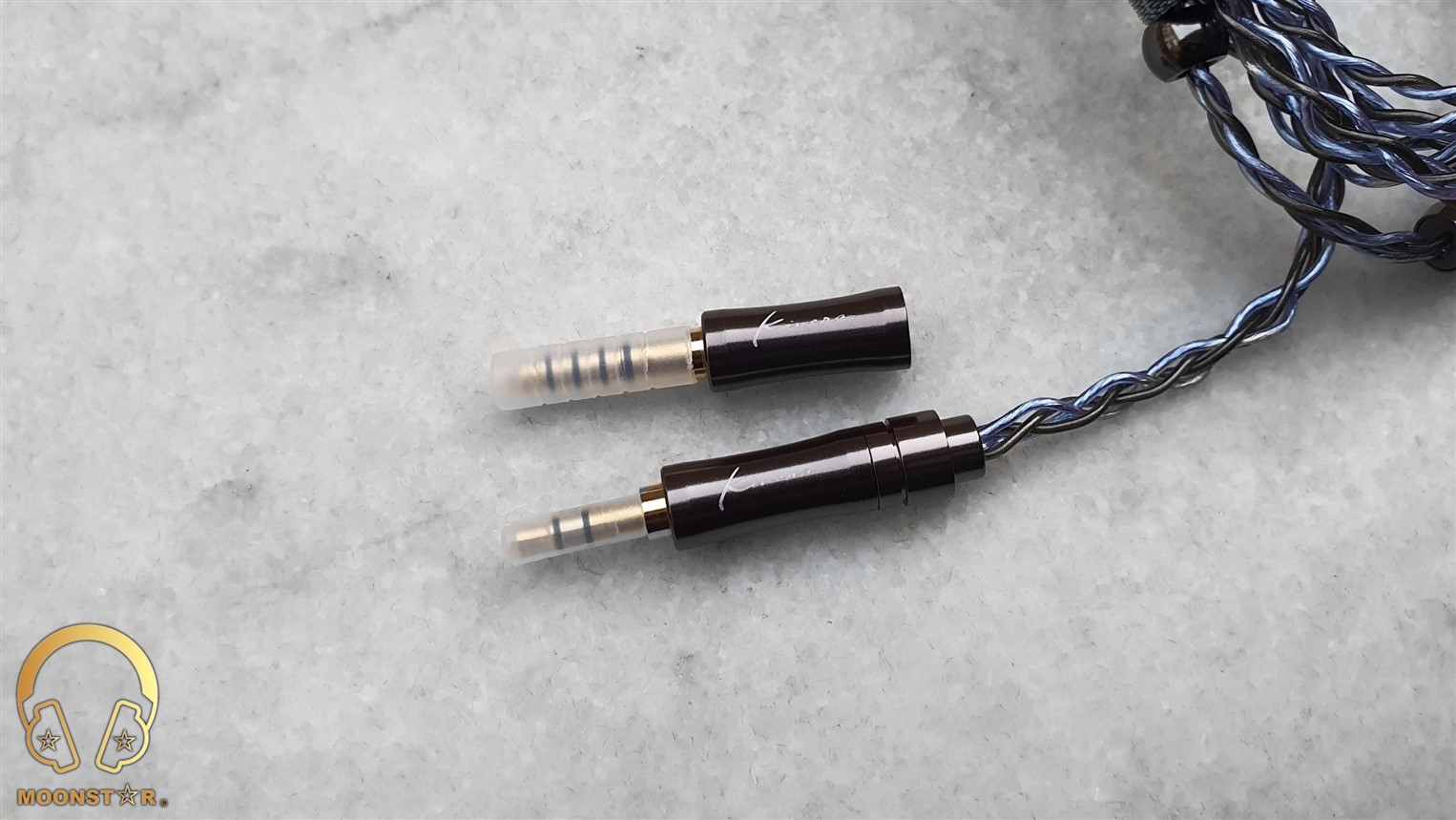
Fit, Comfort & Isolation:
The Kinera Hodur is a pretty small and lightweight (5 grams per earpiece) In-Ear Monitor, which has a very comfortable shape that fits perfectly in to my ears with an average sized concha. The passive noise isolation is on a moderate level that is efficient enough for the use in relative noisy environments such like a bus, subway or train.
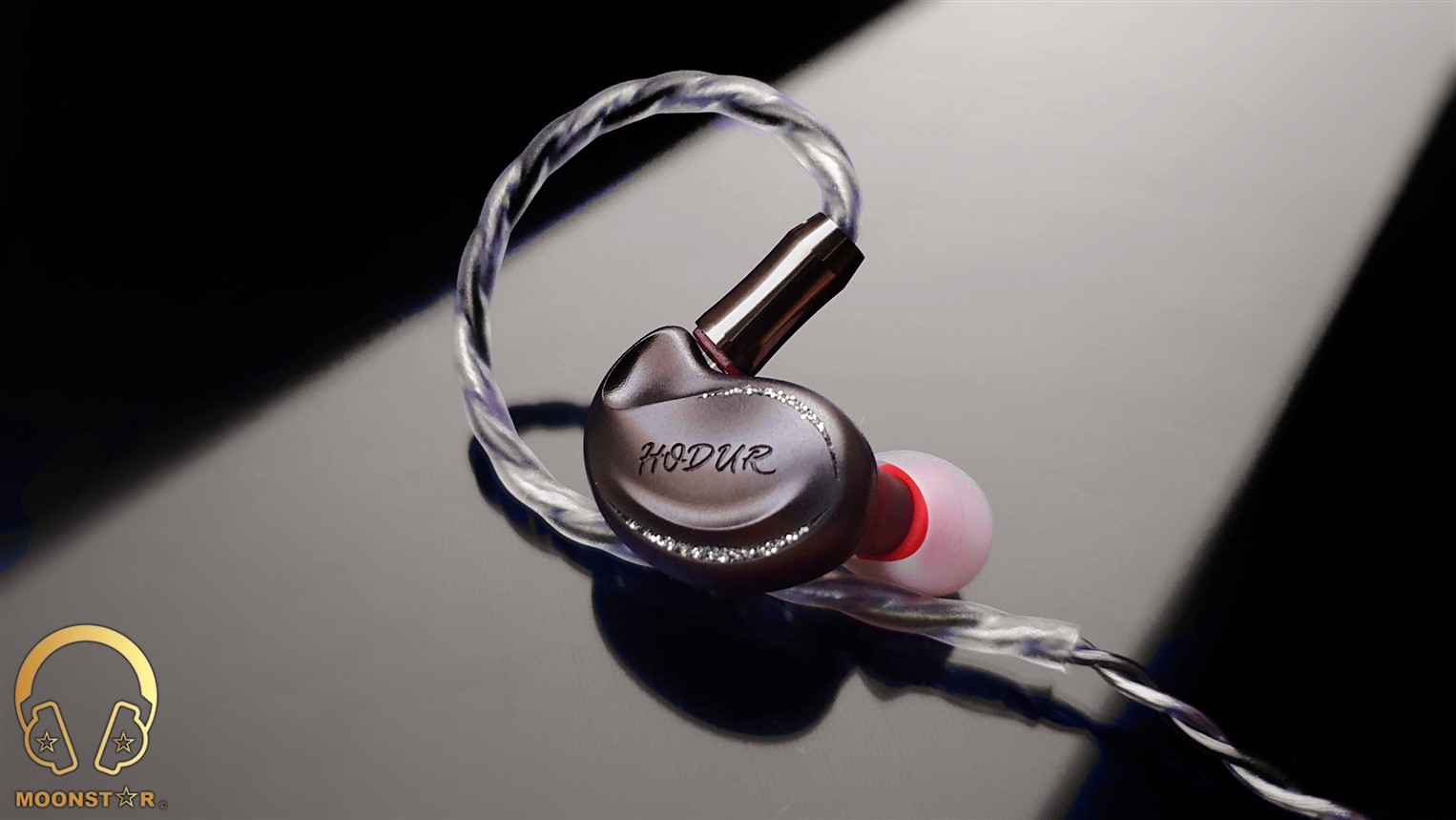
Technical Specifications:
- Driver Combination : 1x Kinera Low Power EST + 1x Kinera Custom BA + 1x 10mm DD
- Impedance : 8Ω
- Sensitivity : 106db±1db
- Frequency Range : 5 Hz – 40 kHz
- Rated Power : 3mW
- Dynamic Distortion : <2% (1kHz, 100dB SPL)
- Connector Type : 0.78mm Diameter 2-Pin
- Plug Type : Modular 3.5mm SE and 4.4mm Balanced
- Cable Length : approx. 1.2m
Drivability & Pairing:
The Kineral Hodur is a pretty easy to power In-Ear Monitor especially compared to other IEM’s that do use a Tribrid Driver configuration with at least one EST Driver. The EST driver of the Hodur is Kinera’s In-House developed Low Power EST driver, which makes it more efficient.
The Hodur has an impedance of 8Ω and sensitivity about 106dB, which makes it to an ideal IEM for the use with source such like USB DAC/AMP dongles that do have in general a relative weak amplification circuit.
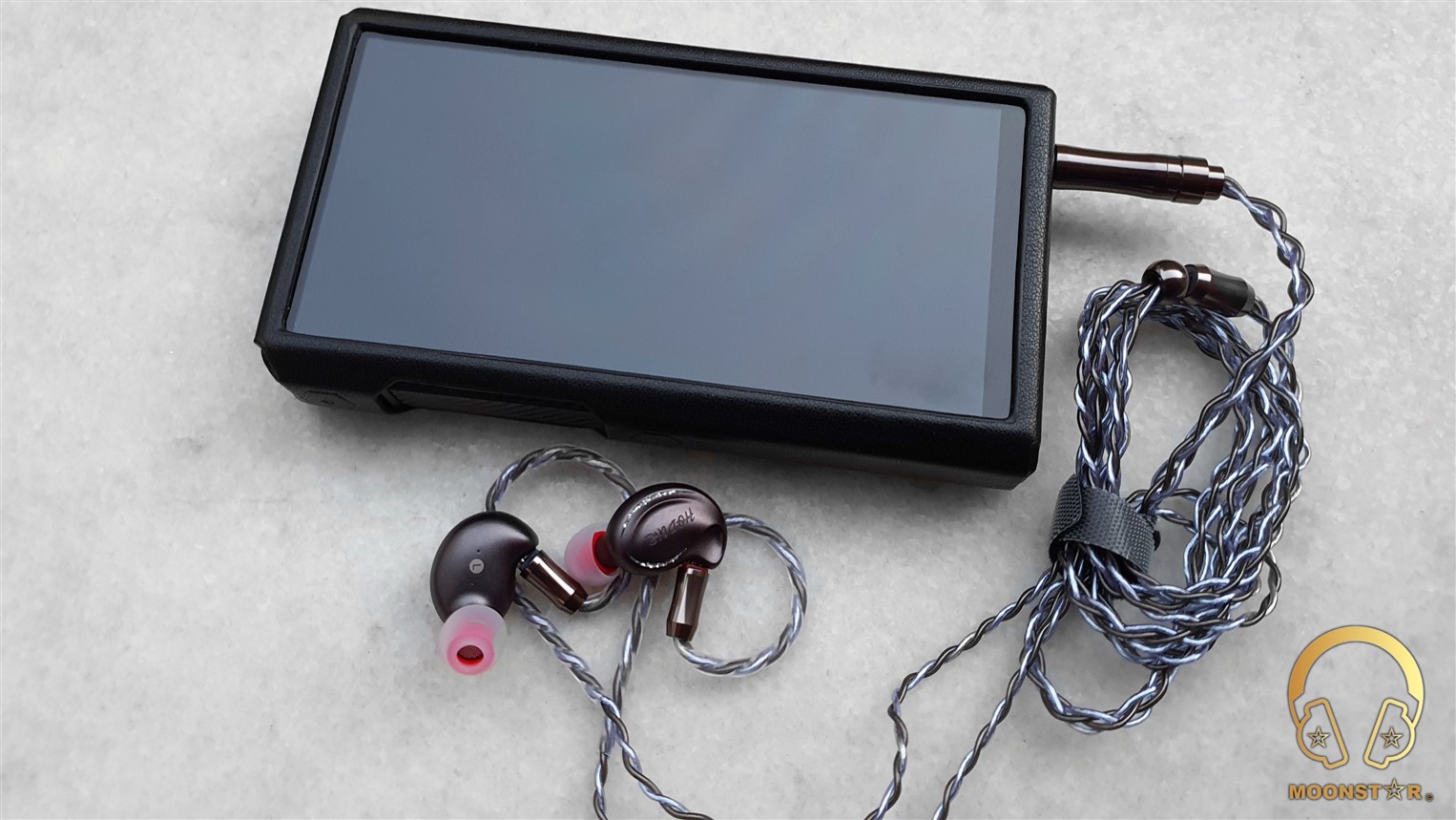
Equipment’s used for this review:
IEM’s : Kinera Hodur, Earsonic Corsa
Sources : FiiO M11 Plus, iFi Audio xDSD Gryphon, FiiO BTR7
Albums & tracks used for this review:
- Adele – My Little Love (Spotify)
- Randy Crawford – On Day I Will Fly Away (Flac 16bit/44.1kHz)
- Hayley Westenra – Odyssey Album (Dezzer HiFi)
- Dionne Warwick – Walk On By (Flac 16bit/44.1kHz)
- Sarah McLachlan – Angel (Flac 24bit/48kHz)
- Sertap Erener – Aşk (Flac 16bit/44.1kHz)
- Edith Piaf – Non Je Ne Regrette Rien (Flac 16bit/44.1kHz)
- Diana Krall – So Wonderful (DSF)
- Aretha Franklin – I Say A Little Payer (Flac 24bit/96kHz)
- Sonya Yoncheva – (Giuseppe Verdi) II Trovatore, ActI (Flac 24bit/96kHz)
- George Michael – Don’t Let the Sun Go Down on Me (Flac 24bit/192kHz)
- David Bowie – Heroes (Flac 24bit/192kHz)
- Elton John – Rocket Man ((Flac 24bit/96kHz)
- Barry White – Just The Way You Are (Flac 24bit/48kHz)
- Isaac Hayes – Walk On By (Flac 16bit/44.1kHz)
- Sting – Englishman in New York – (Flac 24bit/48kHz)
- Eric Clapton – Wonderful Tonight (Flac 24bit/96kHz)
- B. King – Riding With The King (Tidal Hi-Fi)
- Dave Gahan – Kingdom (Tidal Hi-Fi)
- U2 – Sunday Bloody Sunday (Flac 16bit/44.1kHz)
- Bro Safari, UFO! – Drama (Deezer HiFi)
- Armin Van Buuren – Vini Vici (Flac 16bit/44.1kHz)
- Daft Punk – Doin’ it Right (Flac 24bit/96kHz)
- Jo Blankenburg – Meraki (Spotify)
- Lorde – Royals (Flac 24bit/48kHz)
- Massive Attack – Angel (Flac 24bit/48kHz)
- Toutant – Rebirth (Deezer HiFi)
- Gogo Penguin – Raven (Flac 24bit/192kHz)
- Gogo Penguin – Murmuration (Flac 24bit/192kHz)
- Portishead – It Could Be Sweet (Spotify)
- Max Richter – On the Nature of Daylight (Flac 24bit/96kHz)
- Charly Antolini – Duwadjuwandadu (Flac 24bit/192kHz)
- Ferit Odman – Look, Stop & Listen (Flac 24bit/192kHz)
- Chopin – Nocturn No. 20 In C-Sharp Minor (Flac 16bit/44.1kHz)
- Fazıl Say – Nazım Oratoryosu (Live) (Flac 16bit/44.1kHz)
- Vivaldi – Le QuarttroStagioni “The Four Season” (Deezer HiFi)
- Otto Liebert& Luna Negra – The River (Flac 24bit/192kHz)
- Lunatic Soul – The Passage (Flac 16bit/44.1kHz)
- Deftones – My Own Summer (Shove it) (Flac 16bit/44.1kHz)
- Metallica – Sad but True (Flac 24bit/96kHz)
- Opeth – Windowpane (Flac 16bit/44.1kHz)
- Megadeth – Sweating Bullets (Tidal Hi-Fi)
- Rush’s – Leave That Thing Alone (Flac 16bit/44.1kHz)
- Slayer – Angel of Death (Spotify)
- Liquid Tension Experiment 2 – Acid Rain (Spotify)
- Yosi Horikawa – Bubbles (Spotify)

The Sound:
The Hodur is the God of Night & Darkness that fits perfectly to the sound character of the new Kinera TriBrid IEM. It shows a mildly warm tonality and a pretty smooth & relaxed over presentation. The warm tonality adds the Hodur a great sense of musicality, while the dark/black background creates good conditions to get a decent level of information’s (detail) from the song you are listen to. The bass of the Hodur is impactful while it shows a quite fast and controlled response. The midrange has a warmish tonality, but without to sound veiled or muddy, the sense of clarity and resolution is surprisingly good. The treble range on the other hand is nicely smooth, airy and pretty detailed.
The Kinera Hodur review has been written after a burn-in period of about 70 Hours. I have used the stock 8-Core silver Plate OCC cable and the Balance Silicone Ear Tips that are included to the package. My impressions below are mainly based to pairings with sources like the FiiO M11 Plus, FiiO BTR7 and iFi Audio xDSD Gryphon.
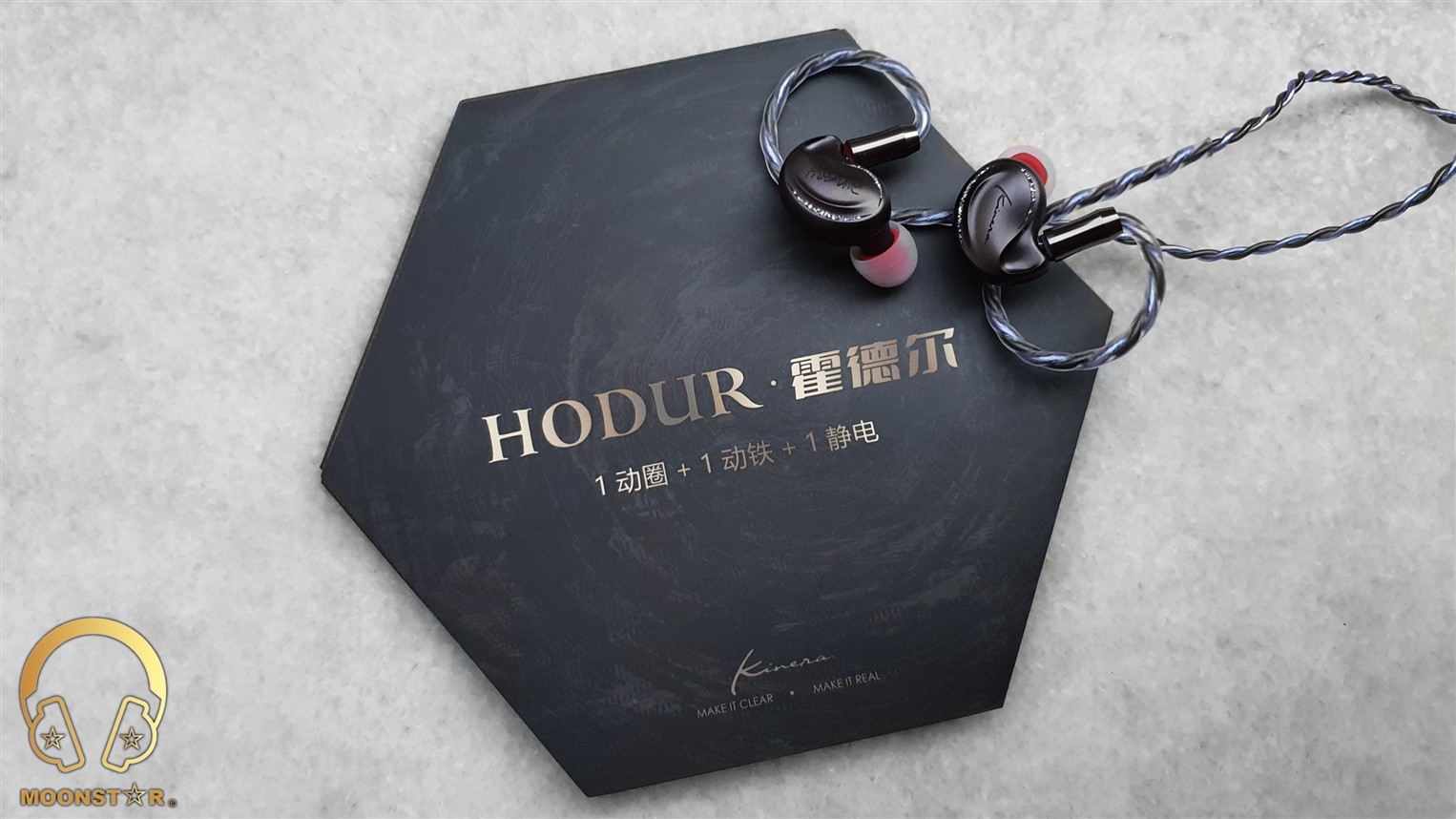
Bass:
The Kinera Hodur surprised me immediately with is clean full bodied and controlled response that is audible both in the subbass and midbass area that is produced with its 10mm Composite Diaphragm Dynamic Driver. The subbass is produced with a natural kind of depth and rumble that stands out with its clean and a controlled decay especially after the 50 hours mark. Songs like Daft Punk’s “Doin’ it Right” and Lorde’s “Royals” are reproduced with decent sense of depth and intensity.
The midbass region of the Kinera Hodur can be described as nicely textured, tight and impactful that stands out with its sense of clarity and control when I do listen to complex passages such like Gogo Penguin’s “Murmuration” and Charly Antolini’s “Duwadjuwandadu”. Instruments such like a bass guitar, contrabass or viola do have in general a natural and efficient grade of body and depth.
The lower frequency region of the Hodur is able to add the overall presentation a good sense of body and warmth without to overshadow the rest of the sound spectrum thanks to its mature/well-adjusted tuning in this area.

Midrange:
The Kinera Hodur shows a pretty transparent and silky smooth midrange presentation. It has a mildly warm tonality that is not overdone, on the contrary, it adds the midrange area a nice sense of musicality while listen to both instruments and vocals. If you like lively midrange presentation with good sense of clarity and resolution the Hodur could be a decent choice for you.
Vocals & Instruments:
The lower midrange of the Hodur has an adequate level of body and depth helps to create a good sense of warmth and fullness, when I do listen male voices such like Dave Gahan, Barry White and Isaac Hayes. The lower midrange is shown with an above average grade of clarity and doesn’t shows any negative conditions such like dullness.
Female voices on the other side do sound emotional, transparent and pretty detailed without to show any remarkable sibilance or unnaturalness, I relay like the sense of transparency and liveliness that the Hodur offers while listen to female voices, which never gets sibilant or sharp thanks to the well-adjusted upper midrange tuning. Vocals like Hayley Westenra, Adel and Aretha Franklin are reproduced in a fairly realistic, lively and emotional manner thanks to the well-adjusted upper midrange tuning that doesn’t creates unwanted situations over sharpness.
The Kinera Hodur NM2 has a fairly natural and musical instrument timbre with a nice touch of warmness that adds any sort of instrument a nice musicality. String instruments for example such like guitars do sound mildly warm, bassy and pretty clean, while pianos do sound dynamic and sparkling, without to show any negative situations like over-brightness or unnaturalness.
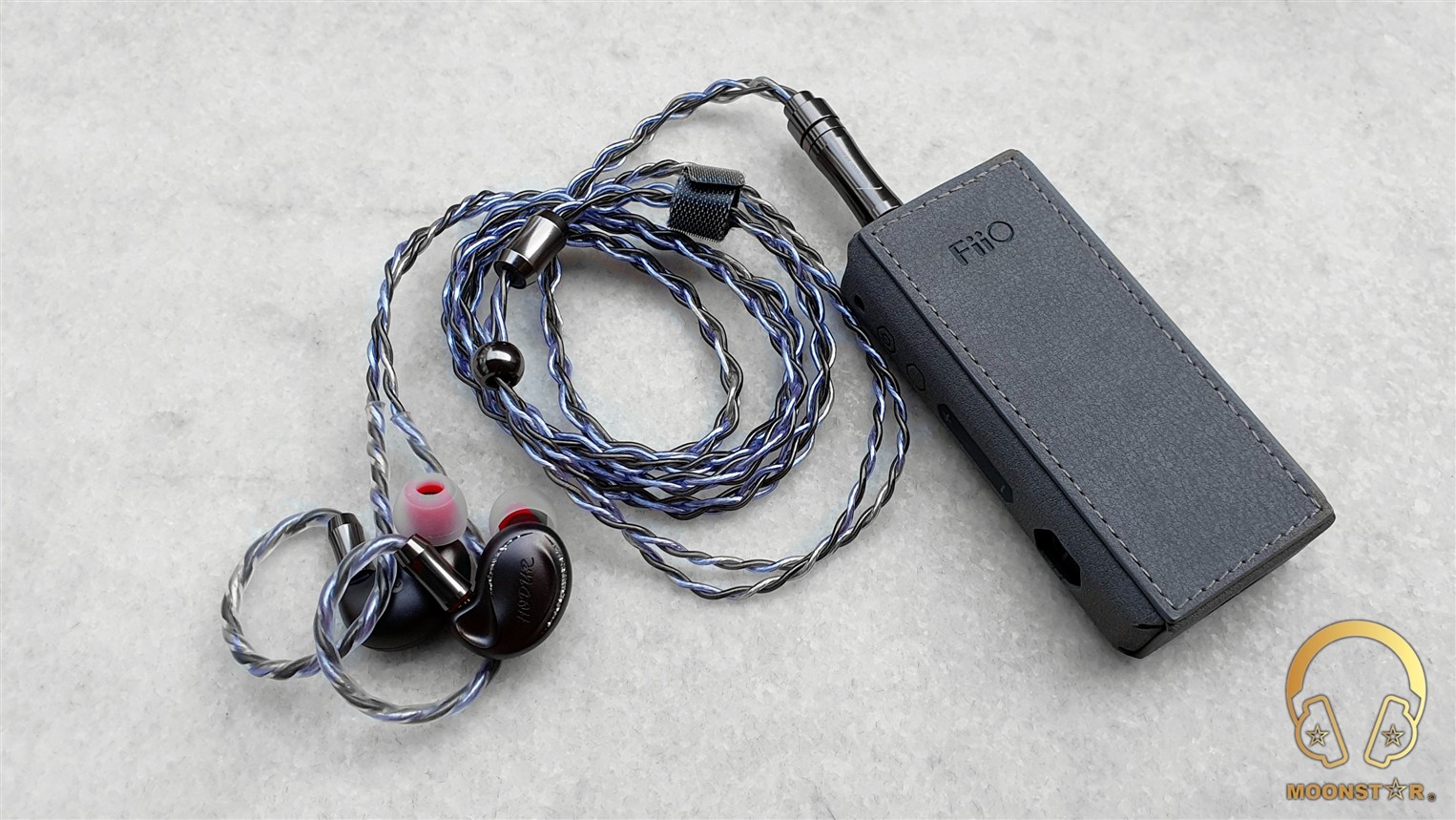
Treble:
The Kinera Hodur has a silky smooth yet pretty detailed treble character that you can listen for hours without to get tired. Don’t get me wrong, this doesn’t mean that the Hodur has not enough treble emphasis, the treble is always there when it needed without to sound dominant or annoying.
The transitions from the upper midrange towards the lower treble region are in general highly controlled in moments when instruments such like electro guitars or soprano vocals are reproduced with high level of distortion. Instruments such as crash & ride cymbals do sound nicely pronounced, while the sense of clarity, intensity and extension is on an efficient level,
Other instruments such like Hi-hats for example do come slightly from the background, while the hits are quite noticeable. Here are also no negative situations like a too short or too long extension.
As a result, the overall treble presentation of the Kinera Hodur can be described as silky smooth, airy and fatigue-free. It offers easy to listen to treble experience, which makes it to an In-Ear Monitor that is ideal for longer listening periods, without to complaint about the missing of clarity and resolution.
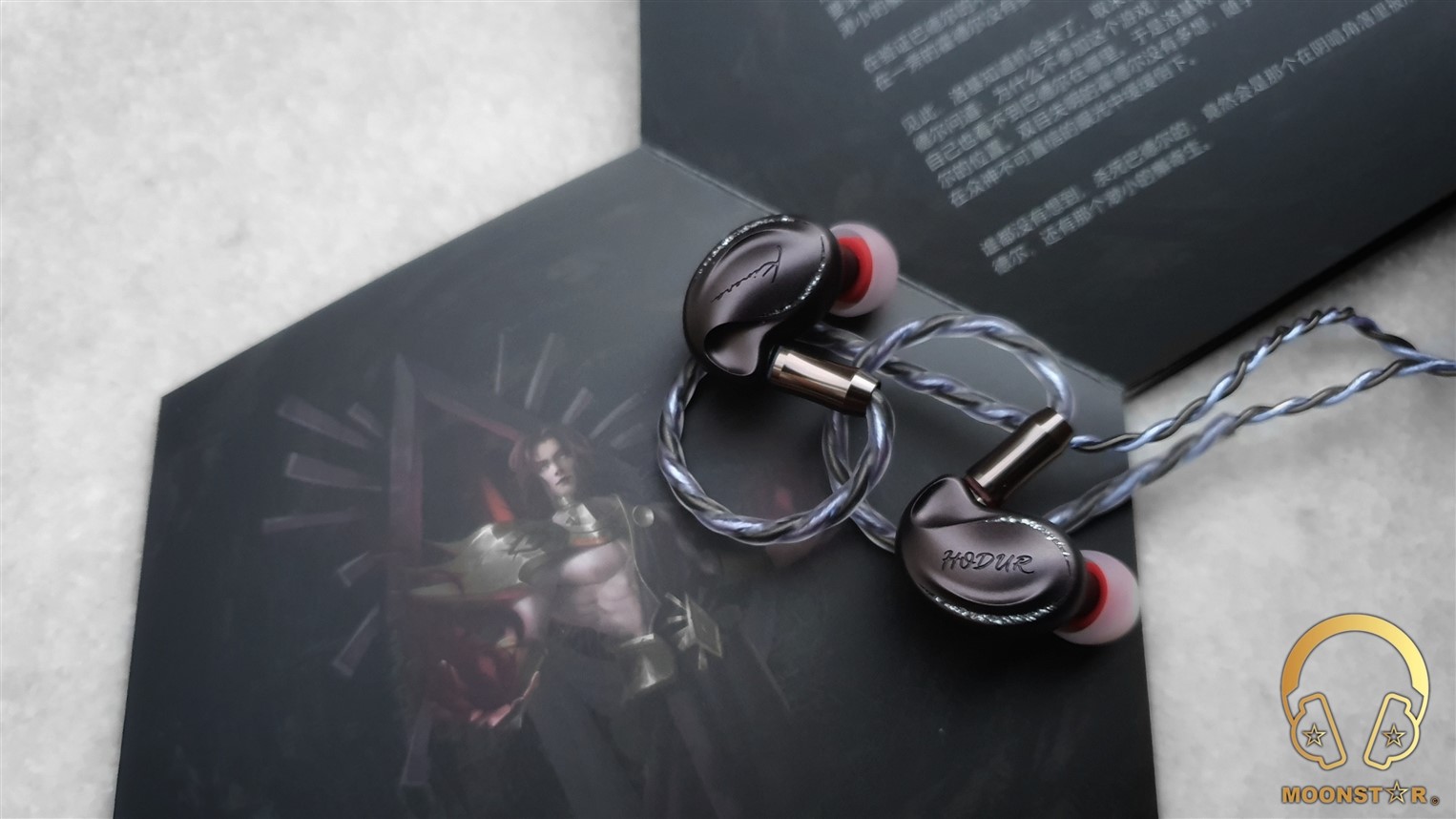
Soundstage & Imaging:
The Kinera Hodur shows a pretty holographic soundstage atmosphere with decent sense of darkness and airiness that creates good conditions for a pretty precise separation of instruments and the vocals. The soundstage has an above average depth and wideness, while the performance of the depth is the real highlight of the Kinera Hodur.
Comparison:
Kinera Hodur versus Earsonics Corsa:
The Earonics Corsa shows a relative warmer tonality compared to the Kinera Hodur, which is otherwise also a fairly warm sounding IEM. The Kinera Hodur has in general a more lively, airy and dynamic overall sound character in direct comparison to the Earsonic Corsa.
The Kinera Hodur offers more subbass depth and extension compared to the Earsonics Corsa that was quite audible in songs like Armin Van Buuren “Vini Vici” or Lorder’s “Royals”, however both IEM’s are pretty successful when it comes to the decay an control in this area. The midbass region of the Corsa has slightly less intensity, impact and resolution compared to the Hodur, which sounds tighter and a bit more controlled when I do listen to complex bass passages such Gogo Penguin’s “Murmuration” or “Raven”.
The midrange of the Earsonics is warm and soft, while the level of transparency and airiness are on an average level. The Kinera Hodur on the other hand, shows a higher grade of transparency and airiness. The lower midrange of the Hodur sounds slightly cleaner and offers a bit more information when I do listen to acoustic guitars or male vocals. The difference in the upper midrange is more audible when I listen to both IEM’s side by side. The Hodur offers a better sense of clarity and resolution. Female vocals do sound more lively and realistic when I switch to the Hodur.
The treble range of the Earsonics Corsa has a moderately bright tonality and shows a smoother character and more relaxed character than those of the Kinera Hodur, which offers a higher sense of brightness and extension. The upper treble region of the Hodur is able to create higher grade of airiness and sparkle, while it still pretty controlled same like the Corsa.
The soundstage of the Kinera Hodur is slightly wider and shows a more airy atmosphere than those of the Earsonics Corsa. However, the biggest difference is audible when it comes to the depth of the stage, where the Hodur is superior to the Corsa.

Conclusion:
Hodur is Kinera’s latest TriBrid IEM that comes with easy to drive self-developed Low power EST + Customized BA + Dynamic Driver configuration that are located inside a beautiful looking, comfortable All-Metal Aluminum Alloy shell. Hodur the God of Night & Darkness impressed me with its pretty musical and silky smooth yet detailed listening experience, and a Holographic Soundstage that has a Dark background, which fits perfectly to the naming of the IEM.
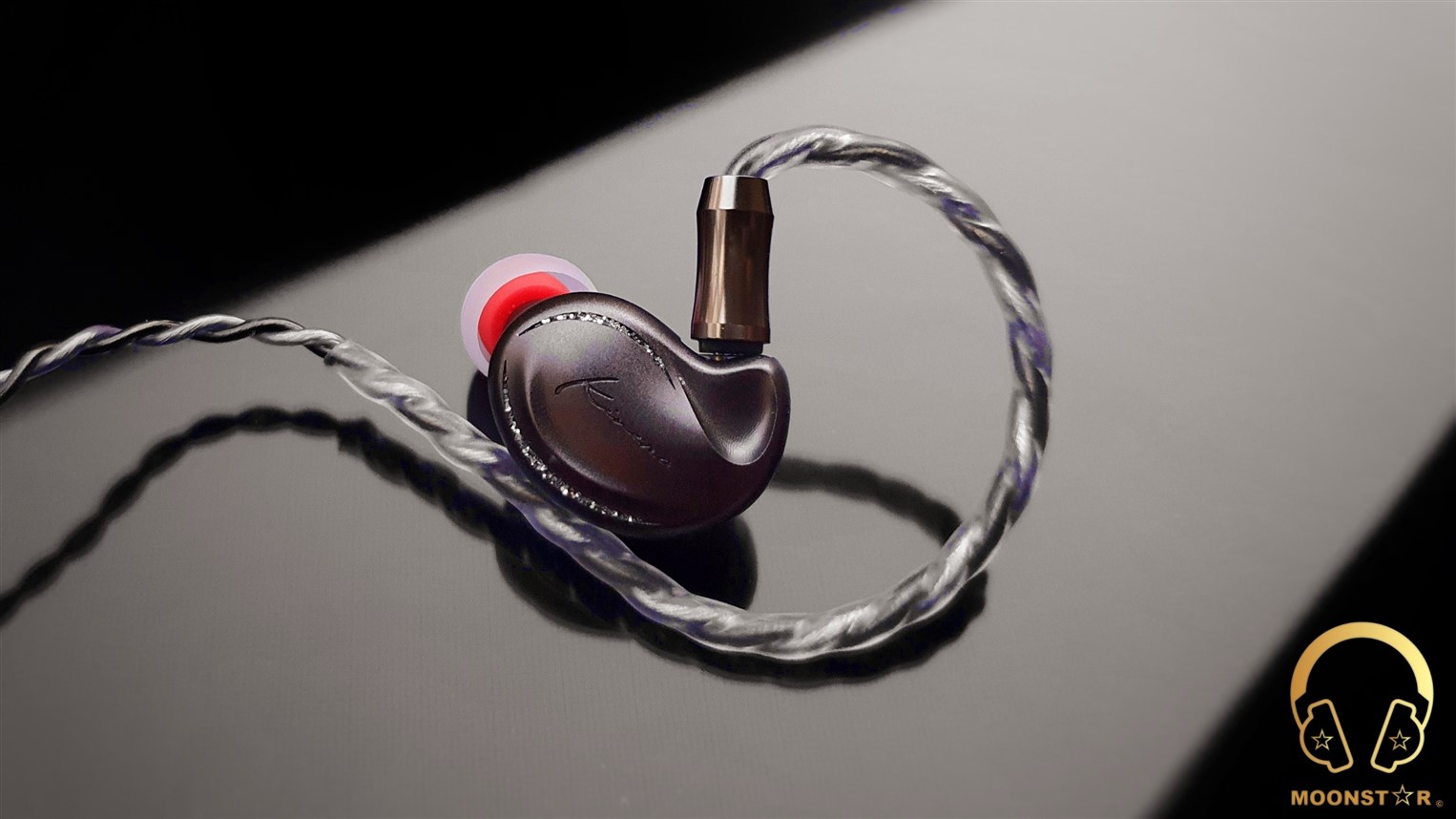
Pros & Cons:
- + Versatile & Highly Musical Presentation
- + Soundstage Performance
- + Easy to Drive
- + Core Fit & Comfort
- + 8-Core Silver Plated OCC Cable with Modular Plug Design
- + Unboxing Experience
- – Not for those who looking for a Reference Type of Sound Tuning
- – The broken Diamond elements May Not Everyone’s Design Choice (I love them)
- – 2.5mm Balanced Headphone Plug Adapter is not included to the package
Thank you for the Read!











